Neutrosophic Adaptive Clustering Optimization in Genetic Algorithm and Its Application in Cubic Assignment Problem
Fangwei Zhang,Shihe Xu,Bing Han,Liming Zhang and Jun Ye
1School of Navigation and Shipping,Shandong Jiaotong University,Weihai,264209,China
2College of Transport and Communications,Shanghai Maritime University,Shanghai,201306,China
3School of Mathematics and Statistics,Zhaoqing University,Zhaoqing,526061,China
4School of Business,Shandong Normal University,Jinan,250358,China
5School of Civil and Environmental Engineering,Ningbo University,Ningbo,315211,China
ABSTRACT In optimization theory,the adaptive control of the optimization process is an important goal that people pursue.To solve this problem,this study introduces the idea of neutrosophic decision-making into classical heuristic algorithm,and proposes a novel neutrosophic adaptive clustering optimization thought,which is applied in a novel neutrosophic genetic algorithm(NGA),for example.The main feature of NGA is that the NGA treats the crossover effect as a neutrosophic fuzzy set,the variation ratio as a structural parameter,the crossover effect as a benefit parameter and the variation effect as a cost parameter,and then a neutrosophic fitness function value is created.Finally,a high order assignment problem in warehouse management is taken to illustrate the effectiveness of NGA.
KEYWORDS Neutrosophic fuzzy set;heuristic algorithm;genetic algorithm;intelligent control;warehouse operation
1 Introduction
In optimization theory,heuristic algorithms are mainly used to deal with Non-deterministic Polynomial(NP)problems.The biggest characteristic of NP problems is that it is not certain whether the answer can be found in polynomial time,but it can be verified in polynomial time.In the process of solving NP problems,the control of optimization quality is the key to determining the quality of a given algorithm.Especially,with the rapid development of society,NP problems cover more and more data,and the monitoring of the optimization process is more and more important.Under the aforementioned background,to ensure the quality of the optimization model,this study introduces the neutrosophic fuzzy thought into the heuristic algorithm and achieves good results.For the convenience of introduction,this study presents a neutrosophic adaptive clustering optimization thought in a novel neutrosophic genetic algorithm(NGA).
Generally,a genetic algorithm (GA) includes four steps,i.e.,coding,selection,crossover,and mutation.In the selection of individuals in each generation,the classical GA is usually mechanical to determine the proportion of crossover and variation,and cannot adjust the aforementioned proportion adaptively according to the quality of individuals in each generation.To solve this problem,this study creatively introduces the neutrosophic fuzzy thought into GA,makes an intelligent transformation of the GA,and creatively proposes a neutrosophic genetic algorithm(NGA).For convenience,some related works on neutrosophic fuzzy sets(NFSs),GA,utility function,and assignment problems are introduced in the following subsection.
1.1 Relevant Studies
In the past decade,scholars have done lots of exploratory research in the field of NFSs.Sodenkamp et al.[1] proposed a novel method to deal with independent multi-source information in the group decision-making process by using single-valued NFSs.Long et al.[2] proposed a fuzzy clustering method using a kind of neutrosophic association matrix.In the same year,Zavadskas et al.[3] proposed a hedonic shopping rent valuation model by the one-to-one neuromarketing meth.Afterward,Rashno et al.[4]proposed a novel clustering model based on NFS theory,whose main role is to calculate the boundary points in the clustering process.Abdel-Basset et al.[5]developed an evaluation method under uncertainty of linear time-cost tradeoffs by using NFSs.In the same year,Son et al.[6]proposed a kind of novel optimal control method in a neutrosophic fuzzy environment by using granular computing.Thereafter,Xu et al.[7]proposed a novel decision-making method based on TODIM and TOPSIS with multi-valued NFSs.Rahman et al.[8]introduced a kind of parameterized NFS,and applies it to decision-making fields.These two types of research combine the NFS with the decision-making theory tightly.
As one of the most classical heuristic algorithms,GA has been a concerned by scholars and has made great improvement in the past decade.Andrade et al.[9] introduced a novel multi-parent biased random-key GA and a novel implicit path-relinking procedure.Thereafter,Wang et al.[10]analyzed the Boolean function from the viewpoint of geometric space and proposed a novel GA to construct objective space with high nonlinearity.Guijarro et al.[11]proposed a model that combined a data envelopment analysis model with a GA to handle sector restructuring problems.Su et al.[12]introduced a novel GA with a specific binary space partition tree,which showed good quality in solving eight benchmark problems,fault diagnosis problems,and hybridized with the molecular signatures’selection problems.In the same year,Ahn et al.[13] put forward a GA for multi-objective feature selection.Koohestani [14] thought that crossover was a very important operator in a GA by which new individuals of the next generation realize time and time again.And then,it proposed a specific crossover operator to solve the problem of variable conversion in combinatorial optimization.
The latest studies regarding utility function have also been taken as foundations for this study.Greve et al.[15]proposed a utility function to calculate the exchange proportion of the monetary value of different products in a management system.Chun et al.[16]proposed a kind of product utility value based on the total performance index method.Meanwhile,a robust utility-based decision model is proposed by Hu et al.[17]to solve the fuzziness and inconsistencies in utility evaluation.Dias et al.[18]studied the generation of the utility function in the random multi-criteria acceptability analysis.This function described how rational consumers make spending decisions.Based on utility function,Niromandfam et al.[19]established the economic demand model of customer risk aversion behavior which considers the influence of incentive payment on power consumption.Mao et al.[20]proposed a comparison of regret and utility-based discrete choice modeling.Afterward,Abraham et al.[21]investigated the problem of utility calculation in wind power generation,hybridized with the main factors influencing utility calculation.
Moreover,some representative research regarding the assignment problem has also been reviewed.Due to the lack of research on the cubic assignment problem(CAP),attention has been paid to the research results on the quadratic assignment problem(QAP)for reference.Duman et al.[22]studied a kind of relative complex assignment problem in circuit board design and introduced a way to solve the given problem.Later,Xia [23] proposed a method using a continuation function to settle the QAP.Meanwhile,Zhang et al.[24]proposed two formula reduction problems for QAP,and studied the effect of constraint reduction hybridized with the effect of variable reduction in a sparse cost matrix.Hafiz et al.[25] proposed a novel probabilistic particle swarm optimization.In addition,Samanta et al.[26]introduced a novel viewpoint on QAP as double target-dependent position-oriented QAP.And then,by combining with the genetic and neighborhood search algorithm,the given problem is solved.Subsequently,Samanta et al.[27] admitted that the QAP was an NP-hard problem,and proposed a quick convergent artificial bee colony algorithm to solve it.
Based on extensive research and the aforementioned research results,this study combines the NFSs and GA organically.For convenience,the objectives and contributions of this study are introduced in the following.
1.2 Objectives and Contributions
In practice,it is hoped that the adopted algorithm is adaptively adjusted according to the specific NP problem to accelerate the optimization and avoid getting trapped into the local optimal solution.Based on the extensive investigation,this study holds that the key to solving the NP problem lies in using modern tools to deal with the multi-source uncertain information in the process of calculation.For example,classical GA includes initialization,individual evaluation,selection operation,crossover operation,mutation operation,and the judgment of termination conditions.Among them,the selection process encountered the most uncertain information,but also the most complex.To treat the encountered uncertainties in all kinds of information in the selection process scientifically,this study introduces neutrosophic thought into GA.Specifically,this study first selects the appropriate subject in the selection process.Then,around the selected subject,the uncertain information in the selection process is divided into three parts,i.e.,the truth part,indeterminacy part,and falsity part.Thereafter,the utility function on NFSs is used to integrate the three types of information and calculate the selection proportion.
The main theoretical innovation of this study is to propose a novel NGA.The first characteristic of NGA is to extract the decision framework from GA and combine the optimization with decisionmaking theories organically.The second characteristic of this study is to calculate the selection proportion in the selection process by using a novel utility function.For convenience,some definitions of GA and NFSs are introduced below.
2 Preliminaries
Definition 1A GA is a kind of Heuristic algorithm to solve optimization problems of both constrained and unconstrained.By referring to the natural selection process in biology,the classical GA generates a population of feasible solutions(individuals)from generation to generation.In each step,the GA selects individuals randomly from the present population and uses them as parents to generate new individuals for the next generation.Time and time again,the population gets constantly approaching the ideal solution.Through summary and induction,the aforementioned statement can be expressed as

where represents the coding methods of individualsErepresents the evaluation function of the fitness value of individuals,P0represents the initial population,Mrepresents population size,Φrepresents the operator of selection,Γrepresents the operator of the crossover,Ψrepresents the operator of the mutation,Nrepresents the termination condition of GA.For the sake of convenience,a schematic diagram of GA is shown in Fig.1.
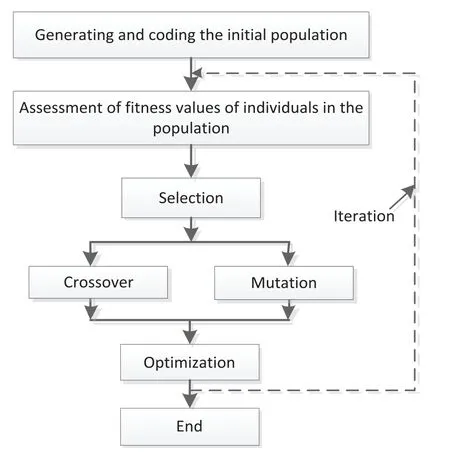
Figure 1:Classical GA process
In the following section,the concept of classical single-valued NFS is introduced.It is noteworthy that this kind of fuzzy set has been widely used in decision making,image process,and medical diagnosis.
Definition 2Assumes the space of points with a representative element in it denoted byy.An SVNSAonYis structured by using a truth membership function TA(y),an indeterminacy membership function and a falsity membership functionFA(y),where and are all mapping functions fromYto [0,1],whereas 0 ≤ TA(y)+ IA(y)+ΓA(y)≤ 3.Then,an SVNSAis denoted as A(y)={〈x,TA(y),IA(y),FA(y)〉|y∈Y}.
For convenience,the single-valued neutrosophic element is denoted asa=〈TA,IA,FA〉.
In the following section,by using the proposed concepts and definitions,a novel NGA is proposed to solve the optimization problem in warehouse operation.
3 Main Results
For the sake of convenience,in this following-up subsection,a kind of generalized utility function(GUF)and a specific utility function(UF)on single-valued neutrosophic sets(SVNSs)are introduced as follows.
3.1 GUF on SVNSs
Definition 3Suppose a single-valued neutrosophic element onY,which is denoted as
a=〈TA(y),IA(y),FA(y)〉.
Then,a kind of GUF onais denoted as

It is noteworthy thatU(·)is composed of two independent variables,where one indicates the modulus,whereas the other is

which indicates the proportion of definite information ina.
Definition 4Supposeais a single-valued neutrosophic fuzzy number onY,which is denoted as
a=〈TA(y),IA(y),FA(y)〉.
Then,specific UF on is denoted as

where is a positive integer which represents the characteristic of users.In industrial production,when users pay more attention to benefits,the parameterαis taken to a larger value;when the user values the cost more,the parameterαis taken to a smaller value.Theoretically,αsatisfy

Especially,when TA(y)-FA(y)>0,α=1,Eq.(2)is reduced as

When TA(y)-FA(y)<0,α=0,Eq.(2)is reduced as

Based on the above analysis,it gets that is suitable for the users who are benefit first and optimistic,while suitable for the users who are cost-effective and conservative.Moreover,some important properties on are introduced as follows.
Theorem 1Supposea=〈TA(y),IA(y),FA(y)〉.Then,it gets
Uα(a)=1iff〈TA(y),IA(y),FA(y)〉=〈1,0,0〉,
and
Uα(a)=0iff〈TA(y),IA(y),FA(y)〉=〈0,0,1〉.
Theorem 2Supposea=〈TA(y),IA(y),FA(y)〉.Then,when it getsUα(a)=andUα(a)=0iff〈TA(y),IA(y),FA(y)〉=〈0,0,1〉.
Theorem 3Supposea=〈TA(y),IA(y),FA(y)〉.Then,when TA(y)-FA(y)>0,α=1,it getsU1(a)>when TA(y)-FA(y)<0,α=0,it getsU1(a)<
Theorem 3 indicates thatU1(a)is suitable for an optimistic environment andU0(a)is suitable for a pessimistic environment.
3.2 NGA for Warehouse Operation
Based on combining GA and NFS theories,a novel heuristic algorithm is proposed.For convenience,the benefit-oriented objective is taken as the research object,i.e.,the larger the objective function value is,the better the feasible solution.In the following,the studied problem will be introduced firstly.
(i)Problem introduction
In the production activities of enterprises,there are a variety of attributes to be considered,such as risk,efficiency,cost,environmental protection,etc.Suppose that there are n objectsΔi(1 ≤i≤n)to be assigned to n locations ∇j(1 ≤j≤n)which satisfy that each object is designated to exactly one location.For any given three assignments,i.e.,(Δi,∇j),(Δk,∇l),(Δs,∇t),they influence each other.Under the aforementioned multiple attributes,the objective of the given problem is concluded to minimize the comprehensive target of the assignment.Denote the objective of the assignment as


Then,the optimization problem is expressed as
In theories,when n is large enough,it is difficult to find accurate feasible solutions for Eq.(4)in a limited time.Then,the existing heuristics algorithms seek near-optimal solutions at a low cost,where GA is one of these heuristic algorithms.
(ii)Analysis of adaptive clustering
To solve the aforementioned problem using classical GA,one important step is to divide the newly generated offspring of each generation into two parts,where one part is to make the crossover,and the other part is to make mutation.Usually,the criterion of this division is the order of fitness function values of the individuals of the same generation.However,there is a lot of uncertain information which is related to the proportion of division.In classical GA,the proportion is often fixed,which limits the environmental applicability of the classical GA.Furthermore,when the optimization problem changes,it cannot improve the optimization by adaptive adjustment of the proportion.Based on the aforementioned analysis,this study introduces neutrosophic thought to handle the uncertain information in the selection process,and then presents a novel method to adjust the division proportion according to the optimal environment.To illustrate the neutrosophic thought better,the iterative process of individuals between different generations please see Fig.2.
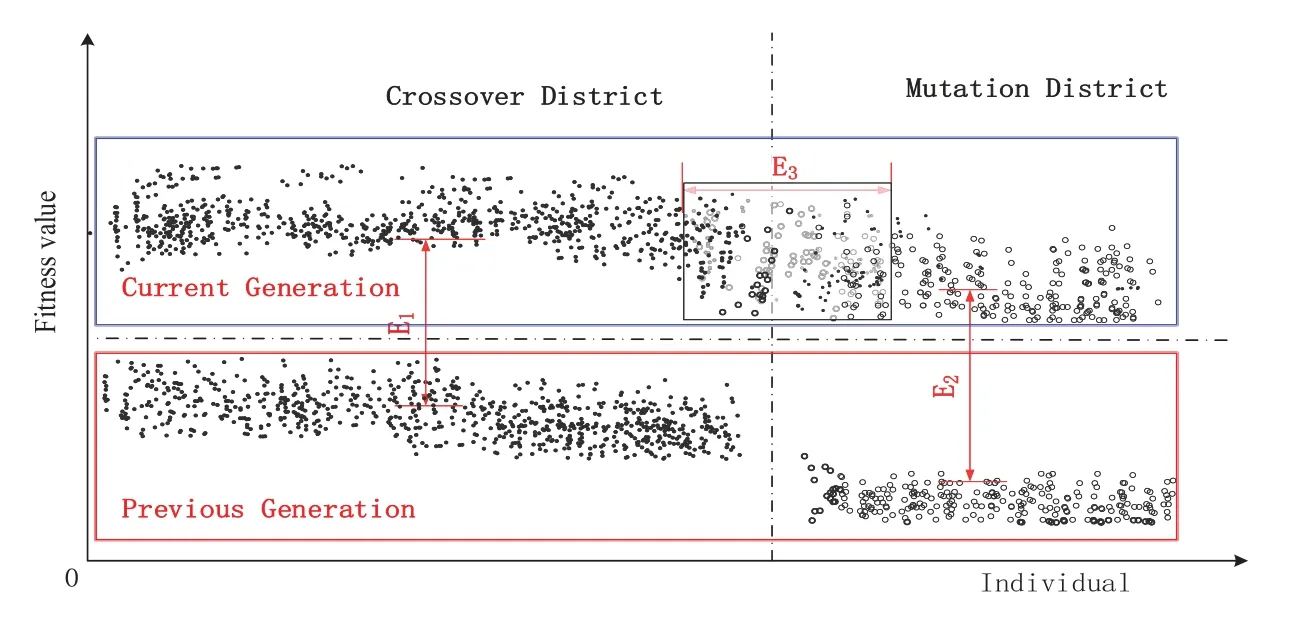
Figure 2:Iteration of individuals from the previous generation to the current generation
As illustrated in Fig.2,the iteration effect of individuals in the crossover region and the mutation region can be evaluated by many different measurement functions.For convenience,the two aforementioned effects are denoted asE1andE2,respectively.Meanwhile,the individuals of the previous generation are divided into two parts according to the corresponding proportion of the previous generation,where one is the crossover region,and the other is the variation region.Because the total number of crossover particles and mutation particles is certain,E1andE2are competitive.In other words,in the process of particle clustering,E1andE2are opposite.IfE1is dealt with as positive,E2should be dealt with as negative to maintain consistency of logic.
Moreover,after one time crossover and mutation,it can be concluded by calculating the fitness function value that the next generation produced by individuals in the crossover area is not necessarily superior to the corresponding individuals in the mutation area.That is to say,some of the offspring of the individuals in the crossover zone go into the mutation zone,and some of the offspring of the individuals in the mutation zone go into the crossover zone.The penetration of the two parts of invidious into each other’s region reflects the unstructured characteristic of the region segmentation proportion.Let’s call itE3for convenience.So far,the factors affecting the selection proportion are divided into three parts.
Next,it takes the crossover region as the subject and the variation region as the object,and analyzes the obtained three parametersE1,E2andE3from the perspective of neutrosophic thought.From the point of view of the crossover district,it regards the iteration effect as an NFS,which is regarded as the benefit of the NFS,E2is regarded as the cost of the NFS,andE3is regarded as the indeterminacy of the NFS.Further,whenE1,E2andE3are normalized,it can get a standard NFS.Thereafter,by using the utility function,the iterative effect can be characterized by a single value,which can be handled naturally as a division proportion of the next generation of individuals.
Specifically,whenE1is large,the proportion should be a larger value,whenE2is large,the contemporary proportion should be a smaller value,and whenE3is large,the contemporary proportion should be a smaller value,which is exactly in line with the idea of NFS,exactly in line with the idea of utility.This consistency constitutes the theoretical basis of this study.
(iii)Specific steps of NGA
Based on the aforementioned analysis,and by combing NFSs and classical GA theories organically,the introduced model(Eq.(4))is solved.Specific steps are as follows.
Step 1 Initialization.Set the number of iteration times asn,set the maximum number of iteration times asN,and randomly generate individuals as the initial populationX0.
Step 2 Individual evaluations.For any given feasible solution for Eq.(4),it gets a feasible function valueγ (x).DenoteX0=wherex0,m(1 ≤m≤M)represents an individual.By comparing the obtained feasible function valuesγ(1 ≤m≤M),the generated individuals are ordered.Denote the orderedX0asX0′,whereX0′=.It is noteworthy that for any twox′0,m1andx′0,m2,it getsx′0,m1≥x′0,m2on the conditionm1>m2,0 ≤m1,m2,≤M.
Step 3 Select operations.According to the valuesγ (x0m)(1 ≤m≤M),divide the initial populationX0′into two parts,where one part is for crossover,and the other part is for mutation.For convenience,the divided two parts are denoted asX0′1andX0′2.Set the initial selection proportion asp0,then,it get s

whereM1=([p0·M]∨0.02)∧0.98,whereas[·]represents integral function.
Step 4 Crossover and mutation operations.By using certain crossover operators transferred toX11,whereX11={x1,m1,x1,m2,...,x1,M1}.By using mutation operators transferred toX12,whereX12={x1,M1+1,x1,M1+1,...,x1,M}.
Step 5 Fuzzification operations.The iteration effect of individuals in the crossover region and the mutation region is expressed as

respectively.
Meanwhile,denoteX1={X11,X12}.by using feasible function valueγ (·)the individuals of the offspring generation are ordered.Denote the ordered result asX*1,whereX*1={x*11,x*12,...,x*1M}.
Then,X*1is divided into two parts,i.e.,X*11andX*12where

respectively.The aforementioned unstructured parameter is expressed as

whereCar(X12∩X*12)represents the cardinality of the intersection ofX12andX*12.
Then,a neutrosophic fuzzy number subject to the effect of crossover is obtained as

Step 6 Iteration of the division proportion.By referencing Eq.(2),the utility function value ofa1is obtained as

Denote the iterated selection proportion asp1=Uα,n(a).Then,X*1is divided into two parts,i.e.,andwhere

whereM2=[p1·M].Then,turns to Step 4 and Step 5,successively.
Step 7Denoten=n+1,ifn <N,turn to Step 3,and denoteMn+1=([pn·M]∨0.02)∧0.98;if else,select the final optimal solution asx′n1.
(iv)Supplement
To further explain the novel NGA model,some supplementary explanations are provided.
(1) In Step 5,Eqs.(5) and (6) are proposed to describe the iteration effect of the individuals in crossover district and mutation district,respectively.The essence ofE11andE12are all mean functions,comparing with the best individual of the same generation.The purpose of the proposed mean function is to improve the overall quality of individuals.Only when the overall quality is improved,can the model break through the local optimal solution more powerfully.
(2) In Step 6,Eq.(9) is a generalized time-varying function of Eq.(2).By elementary algebra calculation,it getsUα,1(a)∈[0,1],Uα,1(〈1,0,0〉)=1,Uα,1(〈0,0,1〉)=1,which are consistent with Eq.(2).However,whenE11=E12,it gets

which is not equal asUα(a).The reason to proposeUα,n(a)is to achieve partial control on the selection process in the NGA model.In the specific calculation process,at the beginning of the iteration,the cross individuals in the crossover district should be allowed to evolve,so the size of the crossover district should be guaranteed throughUα,n(a).With the increase in the number of iterations,it is difficult to evolve in both crossover and mutation.At this time,the mutation district should be expanded to jump out of the potential local optimal solution.This ideal process is realized by

By Eq.(10),with the increase in time of iteration,the restriction on the crossover is tightened,and the support of mutation is strengthened,which achieves the scheduled planning.
(3) In Step 3,the threshold function is settled inMn.Through the threshold function,crossover and mutation can be realized generation by generation,without the sudden termination of crossover or iteration.In essence,the threshold function is a kind of protection for the adaptive adjustment ofpn.
4 Illustrative Examples
4.1 Problem Introduction
In this section,a CAP in a dangerous goods warehouse is introduced to verify the proposed NGA model.Assume that there are 14 inbound points to stocking in and 14 outbound points to stocking out.For convenience,the inbound point is denoted aspi(1 ≤i≤14),the outbound point is denoted asqj(1 ≤j≤14).Assume that 3 forklifts are assigned to inbound and outbound dangerous goods.Here,inbound and outbound activities are carried out simultaneously.Specifically,the workflow of the forklift is as follows.Firstly,the operating forklift should carry the inbounding hazardous goods from the inbound container.Secondly,the forklift should discharge the goods to the inbound point.Thirdly,the empty forklift should travel to the outbound point directly,and pick up the outbound goods to the outbound container.Fourthly,the forklift should travel back to the inbound container to prepare for the next inbound activity.For convenience,the chain of the aforementioned four operations is named a closed-loop storage chain.The distance for forklifts to travel to finish a closed-loop storage chain depends on the location of the inbound point and outbound point.For any givenpiandqj,there is a corresponding closed-loop storage chain whose distance is denoted aslij.Denote the distance of all pairs of(1 ≤i,j≤14)asL=where the row inLcorresponds to the inbound point,and the column inLcorresponds to the outbound point.To simplify the calculation,the original distances of the closed-loop storage chains are normalized by using the function

By field investigation,it gets

Denote the fixed cost for operation management per hour asCr,denote the normal speed index of the forklifts asτv,denote the time cost of the operation asCt=Cr·τv-1·l′,denote the influence factor of variable speed on operation time asτ1,denote the influence factor of variable speed on fuel cost asτ2,and denote the normal fuel cost index for the forklift to travel asCf.Assume that the problem is in the off-season of warehousing activities.Therefore,the cost is the only optimization goal.Of course,the cost here includes the opportunity cost caused by the storage accidents.Then,according to the field survey,the comprehensive negative-cost optimization model is obtained as

It is noteworthy that Eq.(11)is a positive objective function,i.e.,negative cost,to be consistent with the optimization environment of this study.
4.2 Optimization Process Using NGA
By using the proposed NGA model,the introduced problem is solved.First of all,a series of parameters are provided.Specifically,it values thatτv=3.50,Cf=2.40;τ1=0.05,τ2=0.05,τ3=0.40.Then,by using the proposed NGA,the introduced problem is solved.Specific steps are as follows.
Step 1Set the number of iteration times asn,set the maximum number of iteration times asN=200,and randomly generate 200 individuals as the initial populationX0.For convenience,denoteX0=
Step 2For any given feasible solutionxfor Eq.(11),it gets a feasible function valueγ (x).By comparingγ(1 ≤m≤200),the generated individuals are ordered.Denote the descending orderedX0asX0′,whereX0′=
Step 3DenoteM1=0.80.According toγ (·),divideX0′asand,respectively.
Step 4By using certain crossover operatorΓ,is transferred toX11,By using mutation operatorΨ,X02is transferred asX12.
Step 5By using Eqs.(5)and(6),the iteration effect of individuals in the crossover region and the mutation region are obtained asE11andE12,respectively.DenoteX1={X11,X12}.Similar to Step 2,and by usingγ (·),X1is translated toX*1.And then,X*1is divided asX*11andX*12,respectively.Then,by using Eqs.(7)and(8),E13anda1are obtained.
Step 6For convenience,denoteα=0.5.Then,by using Eq.(9),p1is obtained.DenoteM2=[p1·M],then,X*1is divided into two parts,i.e.,X′11andX′12.Then,turns to Step 4 and Step 5,successively.
Step 7Denoten=n+1.Ifn <200,turn to Step 3;if else,select the final optimal solution asx′200,1.Through random test,one optimal process is obtained as Fig.3,the optimal fitness value is obtained as-4.9319,and the optimal solution is obtained as

It is noteworthy that in the process of optimization,the NGA breaks through multiple locally optimal solutions by strengthening mutation.The most obvious one occurred in areas A and area B.This shows that the intelligent regulation of the proportion of crossover and mutation has achieved good results.
4.3 Comparative Analysis
In this subsection,based on example calculation,the NGA and classical GA are compared.By comparison,some peculiar characteristics of NGA are described specifically.
(1) In NGA,the proportion of individuals in crossover and mutation districts is adjusted adaptively according to the effect of crossover and mutation.Correspondingly,in the classical GA,the proportion of crossover and mutation is fixed.Through the adaptive adjustment of the proportion of crossover and mutation,the NGA can strengthen crossover in the early stage of calculation to improve calculation efficiency,while strengthening mutation in the later stage of calculation to improve the ability to break through the local optimal solution.For more details on the change in the proportion,please see Fig.4.
(2) The NGA highlights the overall optimization by using the mean functionE11andE12.The calculation shows that through NGA,the overall quality of the population is guaranteed.In particular,the overall quality of the individuals of the 1st,50th,100th,150th and 200th generations is shown in Fig.5.The average fitness values of all invidious,invidious in crossover district,and invidious in mutation district in different generations are shown in Fig.6.
(3) The NGA focuses on the handling of the uncertain information in the optimization process,and realizes the combination of the fuzzy utility function on NFS and GA.Correspondingly,the classical algorithm pays less attention to the information from the thought of Dialectics.
(4) By using the parameternin Eq.(10),the NGA realizes the limited control of the optimization trend.Meanwhile,throughE11andE12in Eq.(10),the NGA realizes the adaptive adjustment of the optimization.In contrast,classical GA is difficult to adjust the genetic strategy in the optimization process.
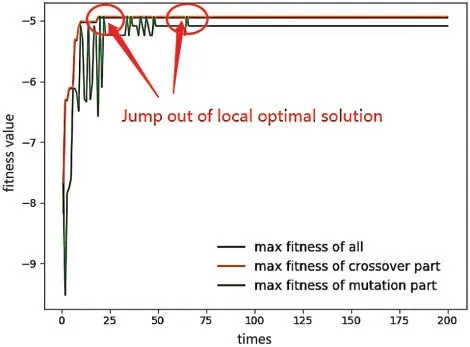
Figure 3:Optimal process
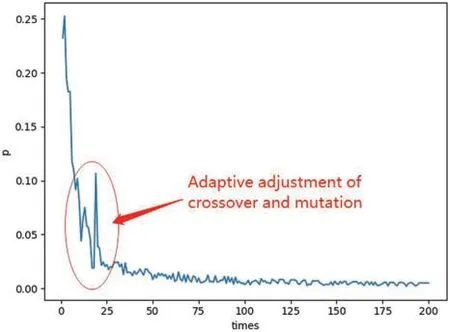
Figure 4:The proportion of crossover and mutation
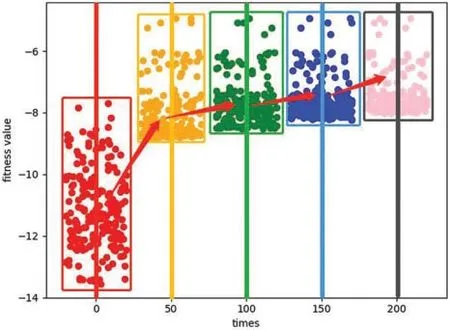
Figure 5:Quality improvement effect of invidious

Figure 6:Average fitness function values of three kinds of invidious
In summary,the differences between the proposed NGA and classical GA are listed in Table 1.

Table 1:Comparison between NGA and classical GA
5 Conclusions
In this study,a neutrosophic adaptive clustering optimization thought is introduced,and an NGA is also proposed.Generally,the classical GA is too mechanical to select individuals for crossover or variation adaptively.Contrastively,the proposed NGA can do this by using a novel neutrosophic adaptive clustering optimization algorithm.Furthermore,the characteristics of the proposed NGA are illustrated as follows.
Firstly,the novel NGA can adaptively adjust the proportion of crossover and mutation according to the crossover and mutation effects.By adaptively adjusting the mutation rate,the crossover can be strengthened in the early stage and the mutation can be strengthened in the later stage,which increases the ability of the proposed NGA to avoid the local optimal solution.
Secondly,in the crossover process,the crossover of the parent generation and the offspring production of the child generation uses the relative relation of position,which improves the computation speed.
Thirdly,the novel NGA treats the crossover effect as a fuzzy set,where the variation proportion is dealt with as a structural parameter,the crossover effect is dealt with as a benefit parameter and the variation effect is dealt with as a cost parameter.Thereafter,this study creatively proposes the fitness function value of the crossover effect by using utility theory on NFSs.
Fourthly,the threshold function is settled in NGA.Through the adopted threshold function,crossover and mutation can be realized generation by generation.In essence,the threshold function is a kind of protection for NGA.With the help of the proposed threshold function,the smooth operation of NGA is guaranteed.
Finally,this study takes the CAP as an example and compares it with the classical GA to verify the feasibility and effectiveness of the proposed NGA.Moreover,as revealed in this study,heuristic algorithms have the problem of dealing with uncertain information in the process of application,and there are some deficiencies in the automatic adjustment of optimization strategies.These deficiencies can be overcome by the combination of decision-making and optimization technologies.In the future,the latest decision-making technologies,such as intuitionistic fuzzy technology,hesitant fuzzy technology,and neutrosophic fuzzy technology,will be applied in optimization algorithms deeply.
Acknowledgement: The authors are thankful to the editors,and the anonymous reviewers for their constructive comments in improving this study.
Funding Statement: The work of the first author is partially supported by Shanghai Pujiang Program (2019PJC062),the Natural Science Foundation of Shandong Province (ZR2021MG003),the Research Project on Undergraduate Teaching Reform of Higher Education in Shandong Province(No.Z2021046),the National Natural Science Foundation of China (51508319),the Nature and Science Fund from Zhejiang Province Ministry of Education(Y201327642).
Conflicts of Interest:The authors declare that they have no conflicts of interest to report regarding the present study.
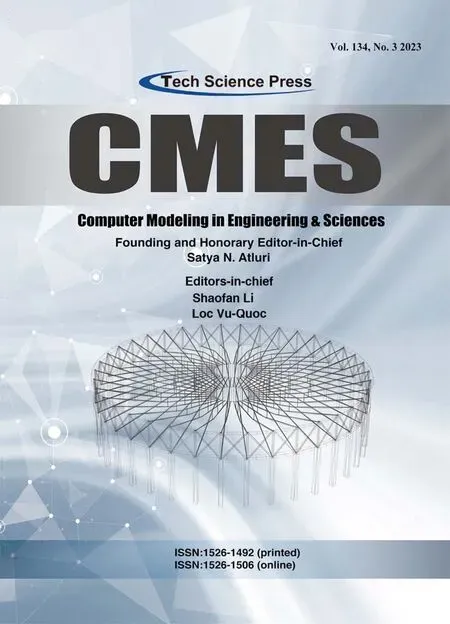 Computer Modeling In Engineering&Sciences2023年3期
Computer Modeling In Engineering&Sciences2023年3期
- Computer Modeling In Engineering&Sciences的其它文章
- A Consistent Time Level Implementation Preserving Second-Order Time Accuracy via a Framework of Unified Time Integrators in the Discrete Element Approach
- A Thorough Investigation on Image Forgery Detection
- Application of Automated Guided Vehicles in Smart Automated Warehouse Systems:A Survey
- Intelligent Identification over Power Big Data:Opportunities,Solutions,and Challenges
- Broad Learning System for Tackling Emerging Challenges in Face Recognition
- Overview of 3D Human Pose Estimation
